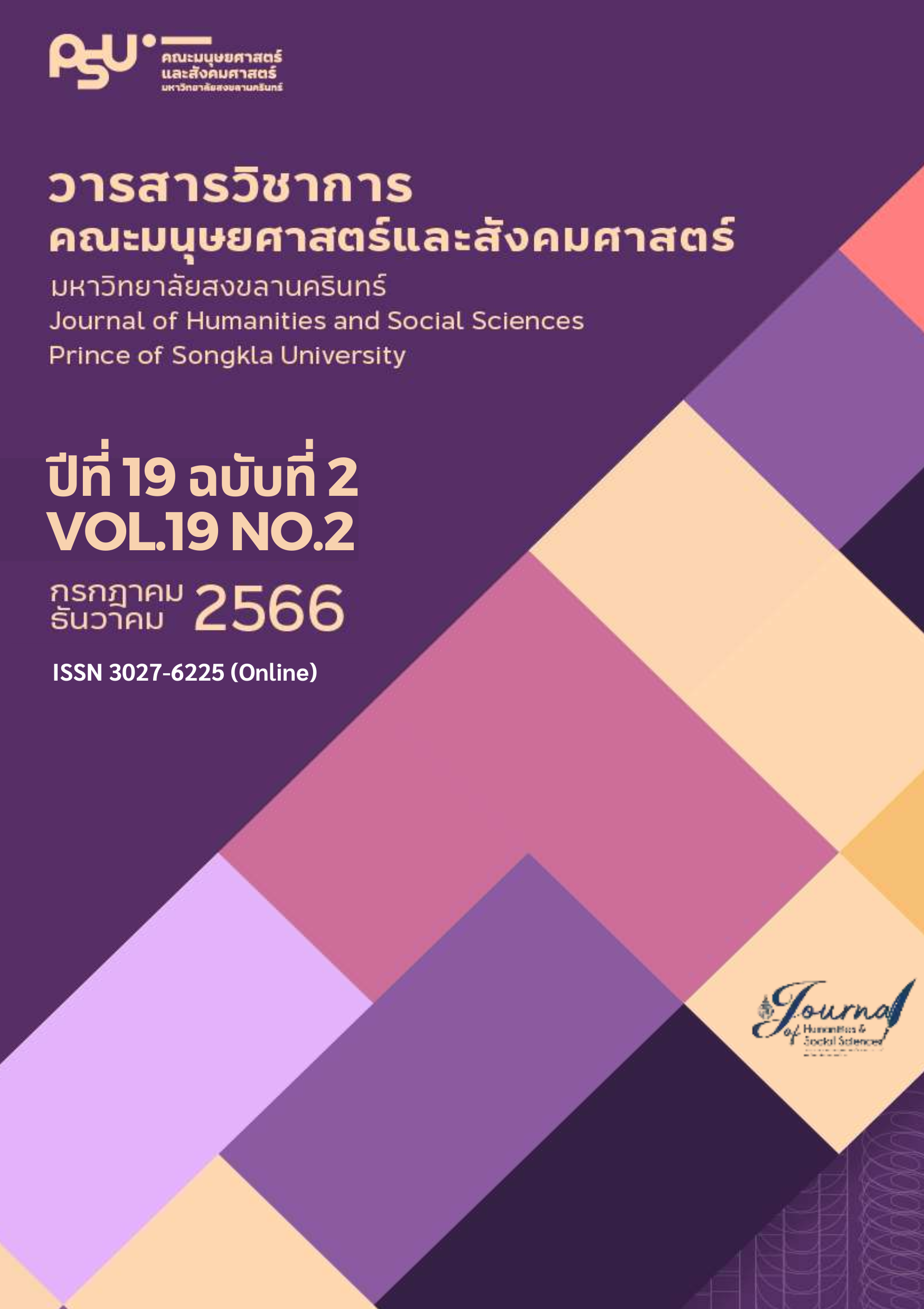A study on Thai students’ use of the polysemic Korean verb '놓다/Nohda/
Keywords:
Polysemic verb, Korean language, 놓다/Nohda, Thai studentAbstract
This research seeks to investigate the importance of acquiring and utilizing polysemic verbs in Korean among Thai students. The study, involving 86 Thai students, revealed that 97.7% acknowledged the significance and necessity of learning polysemic verbs. They expressed a desire to acquire knowledge of polysemic Korean verbs during their classes to employ them appropriately in diverse contexts. Furthermore, 88.3% of students expressed an interest in understanding the Thai meanings of these verbs for use in various contexts.
Regarding the proficiency in using the polysemic verb '놓다' both objective and subjective tests, comprising 30 items across 26 meanings with a passing criterion of 60%, indicated that Thai students could accurately translate the meanings of '놓다' into Thai in 16 questions. These accurate translations primarily pertained to the fundamental meanings of the verb, resembling the Thai concepts of "placing" or "releasing" various objects, both abstract and concrete. Students demonstrated the ability to discern and anticipate meanings based on context.
However, 1 4 questions were consistently answered incorrectly. The analysis revealed that questions answered incorrectly by over 60% of students often involved extended meanings of '놓다,' which Thai students struggled to translate accurately. Conversely, they correctly answered over 60% of the objective test questions, indicating their ability to distinguish the primary meanings of '놓다' and use them appropriately in various contexts.
Nevertheless, they found it challenging to discern and predict extended meanings, even when provided with example situations or specific contexts.
References
กาญจนา สหวิริยะ. (2565). ศึกษาการใช้คำวิเศษณ์บอกเวลาพ้องความหมายในภาษาเกาหลีของนักศึกษาไทย กรณีศึกษา: คำวิเศษณ์บอกเวลา “벌써-이미” “ 지금-이제” “ 어서-얼른”. วารสารวิชาการคณะมนุษยศาสตร์สังคมศาสตร์, 39(1), 42-72.
สถาบันภาษาเกาหลีแห่งชาติ. (ม.ป.ป). พจนานุกรมสำหรับผู้เรียนภาษาเกาหลี-ไทย. https://krdict.korean.go.kr/tha
Cho, H. (2000). A Study on Vocabulary-Based Korean Language Teaching Methods. [Kyung Hee University Graduate School of Korean Language and Literature]. National Research Foundation of Korea (NRF).
Jun, n. (2015). Korean for Intermediate Chinese Learners: Focusing on the Verbs 'Catch' and 'Put' [Master's thesis]. Pusan National University.
Kang, H. (2021). TEACHING RECEPTIVE SKILLS OF KOREAN LANGUAGE (pp.90). Korean cultural history.
Kang, H. (2021). Theory of Korean Vocabulary Education (Series of Korean Language Education 3) (pp.78). Publisher Hangeul Park.
Kang, H., & Lee, M. (2017). Introduction to Korean Language Education (pp.77). Publication Culture Center.
Kang, H., & Lee, M. (2011). Studies in Teaching Comprehensive Skills of Korean Language. Korea National Open University Press.
Kim, H. (2005). Survey on frequency of use of modern Korean language 2. National Institute of the Korean Language.
The National Book of Korean. (2023, March 2) The Standard Korean Dictionary. https://stdict.korean.go.kr/main/main.do.
Netima, B. (2015). A study on educational plans of the polysemic Korean word 'Japta' for Thai learners of Korean [Master's thesis]. Sookmyung Women's University Graduate School.
Sasiwan, N. (2013). A contrastive Study on Polysemous Words between Korean and Thai: Focusing on the verb '먹다' [Master's thesis]. Kyung Hee University Graduate School.
Thanarat, C. (2022). Multisynonym education plan for Thai language learners: Focusing on the verb 'to see', General Graduate School; Korean Education as a Foreign Language [Master's thesis]. Busan University of Foreign Studies.
Wang, H. (2021). A Study on the Chinese Correspondence of Korean Verbs 'Put' and 'Put' [Master's thesis]. Dongguk University Graduate School.
Wilkins, D. A. (1972). Linguistics in Language Teaching. Cambridge: MFT Press.
Zhan, S. (2017). A study on education of Korean polysemy for Chinese learners: focusing on ‘neohda’, ‘nohda’, ‘japda’ [Master's thesis]. Chung-ang University.
Zang, Y. (2011). A Comparative Study of Korean Verbs 'Put' and 'Put': Focusing on Chinese Correspondence [Master's thesis]. Yonsei University Graduate School.
박종화. (1954-1957). 임진왜란. 조선일보.
우 군. (2015). 중급 중국인 학습자를 위한 한국어 다의어 교육 방안 연구- 동사 ‘잡다’와 ‘놓다’ 를 중심으로 [석사학위논문, 부산대학교 대학원]
이희승. (1956). 벙어리 냉가슴. 한국학중앙연구원.
한용운. (1935). 흑풍. 조선일보.
Downloads
Published
How to Cite
Issue
Section
License
Copyright (c) 2023 Journal of Humanities and Social Sciences Prince of Songkla University

This work is licensed under a Creative Commons Attribution-NonCommercial-NoDerivatives 4.0 International License.
บทความนี้ได้รับการตีพิมพ์เป็นของวารสารวิชาการคณะมนุษยศาสตร์และสังคมศาสตร์ คณะมนุษยศาสตร์และสังคมศาสตร์ มหาวิทยาลัยสงขลานครินทร์ วิทยาเขตปัตตานี






